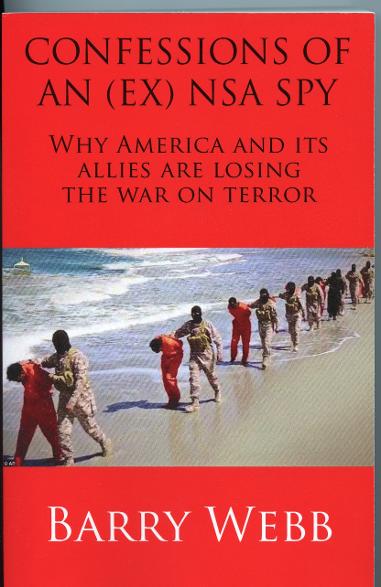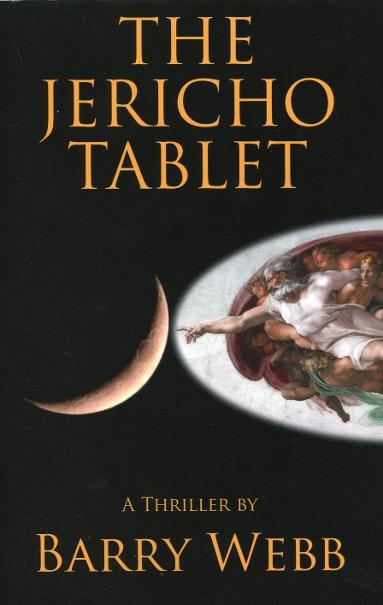WHO WERE THE THREE WISEMEN?
One of the most pervasive and cherished myths in Christianity is the coming of the Three Wise Men out of the east to honor the “new born king of the Jews.” Unfortunately, there are some serious problems with that story. In the first place, it is highly unlikely that any God would send such visitors first to Jerusalem to inform King Herod, and then send them to Bethlehem. That part of the story smells like contrivance and was inserted only for dramatic effect: since Herod was the “heavy” in this story it heightened the “tension of the plot” by having him informed of the birth of a potential rival through this method.
Another problem is that there is only one place in the entire Bible where the “wise men” are mentioned and that is in Mathew chapter 2 verses 1-16, however, nowhere does Mathew define how many wise men came to honor Jesus. We will discuss the significance of the number of “wisemen” being “three” (in subsequent myth) shortly, but first let us turn our attention to their supposed place of origin.
MAGOS OR MAGI OR MAG
The Greek term from which “wise man” was translated is magos meaning “sorcerer,” “shoothsayer,” “astrologer,” “wizard,” etc. Our term “Magi” was derived from the original Greek magos. “Magos,” or “Magi,” was also a term used to depict Zoroastrian priests, and it is this connotation that has led many Christians to assume that the “three wise men” were Zoroastrian priests from Persia. However, by investigating the Greek term magos a little further, we find that other connotations are “knowing,” “knowledge,” “science,” etc. So, “wise men” is not a bad translation after all. That word “magos” may have been originally derived from Babylonian where we find Nergal Shar Usur, the Babylonian commander who conquered Jerusalem in 586 B.C., called rab mag (Jeremiah 39:3 and 39:13) meaning roughly “Field Marshal,” with the word rab meaning “great,” and mag meaning something like “leader.” Whether or not the Babylonians applied that term in any other context besides military is unknown.
SEMITIC NAMES OF THE "WISE MEN."
None-the-less, all throughout the Middle Ages, and into modern times, the majority of Western Christians continued to believe that the “three wise men” were Zoroastrians from Persia. The fact that the Mathew account says that they followed a star to Jerusalem, and then to Bethlehem would certainly seem to reinforce the “stargazer-astrologer” aspect of magos, and thus a Persian, or possibly Babylonian, origin for the “wise men.” However, when one takes a look at the names tradition ascribes to the “three wise men,” the Persian hypotheses begins to break down. “Caspar,” is kind of weird and could be anything, but the other two “Melchior,” and “Belthasar,” are definitely Semitic with “Melchior” being specifically Hebrew. “Melchior” is a corruption of melek oor meaning “The King of Light.” “Balthasar” is probably a corruption of ba’l haser meaning “Lord of Poverty.” Strange names indeed, but names that would seem to point away from a Persian origin for the “three wise men.” However, there were Jews who lived in Persian ruled territory during the time of Christ, so we can’t discount that Persian connection entirely, just yet.
THE ARABIAN GIFTS
But when one takes a look at the gifts these “wise men” bring to present to the new king, the Persian Zoroastrian hypothesis breaks down even further: Gold, Frankincense, and Myrrh. While Gold might be found outside of the Arabian Peninsula, Frankincense and Myrrh are found only in the southern tip of Arabia. This has led a few scholars to postulate that the “wise men” came either from the original homeland of the tribe of Judah/Yahudah (in what is now the western part of the Sultanate of Oman near the mythical city of Ubar), or from Yemen which was ruled by “Jewish” kings at that time (the time of Christ). In either case, their journey to Judea would have taken them past the mahd azh-zhahab, the world’s oldest and richest gold mines (located in west central Arabia). So, Gold, Frankincense, and Myrrh were the most highly valued and appropriate gifts someone from southern, or western, Arabia might bring to present to a king. In other words, everything seemed to fit the southern Arabia hypothesis—including the Semitic origin of at least two of the three names given to the “wise men.”
THE PASSOVER PLOT
According to this (southern Arabia) line of thought, there was a plot, or conspiracy, among a certain sect of the Jews in Judea (but which was known about and viewed with approval by other members of the sect throughout the Jewish settlements in Arabia, as well as Judea, to re-establish an independent “Jewish” Kingdom in Judea and throw off the yoke of Rome. This was to be accomplished by means of the Messiah. Thus, the marriage of Joseph and Mary was arranged to unite the line of the Levite priesthood with the Davidic line of traditional Jewish monarchs. The first born son of such a union would then be both king and priest, and recognized (they hoped) by the Jewish populace as “the” Messiah.
The three “wise men” then (according to this theory), were Jewish leaders from Southern Arabia who were privy to the plot, supported it, and wanted to pay their respects to the new born “priest-king” as soon as possible. That is the explanation that made the most sense, and the one that I personally subscribed to until I began to do more in depth research for the The Last King of Babylon trilogy.
THE BABYLONIAN MOON GOD CONNECTION
Nabu Na’id, the Last King of Babylon, and his mother Adad Guppi, high priestess of the moon god Nanna-Suen, both claimed that Nabu Na’id was chosen by the Creator God and Father of the Holy Trinity, Nanna-Suen, to be king. What is interesting is that the Babylonians thought of the moon as being divided into three phases, and each of these phases of the moon was given a separate name and thought of as a separate entity even though they were a part of the supreme God Nanna-Suen. These three parts, or entities, of the moon were called ashimbabar, namrasit, and inbu, and they corresponded to the waxing moon, the full moon, and the waning moon. In Arabian mythologies, these three Babylonian names are represented by the Arabian names of allat, al-uzza, and manat, the three supposed daughters of Allah, who was a moon god in pre-Islamic Arabian traditions. These three “daughters” of Allah, or aspects of the moon god, are mentioned in the Qur’an 53: 19-20.
THE ANOINTED KING
Now, given that Nabu Na’id’s moon god Nanna-Suen in the Babylonian language was called nar tenisheti, or “light of mankind,” and “The King of Light,” I couldn’t help asking myself why were there “three” wise men in the Christian myth instead of two? Or four? While it is true that Mathew never mentioned how many “wise men” came to honor the new born Jesus, virtually all Christian traditions claim there were three “wise men,” or “kings” who came out of the east to recognize Jesus as “King.” (Though the various Christian traditions all have different names for these three “wise men.”) But why not twelve wise men, in honor of the twelve Israelite tribes, or the Zodiac? Why not seven wise men, or five? Why did it specifically have to be “three” wise men?
WHY ONLY THREE "WISE MEN"
The more I thought about that question, the more I came to realize that the reason Christian traditions claim specifically three wise men, was because this entire story scenario is myth based upon Nabu Na’id’s belief that the moon god, “the guiding light of mankind” chose him to be king. There are three entities that embody the moon god, and they came out of the east, and they selected, chose, and/or anointed the king. In other words what the fashioners of Christian mythology in the late 1st, 2nd, 3rd, and early 4th centuries did was to take this doctrine that was well established throughout the Near East and Arabia and re-worked it into a “Christian” motif in an effort to show that their new deity, and “king” of this earth, was the one who was recognized and anointed by the heavens. The fact that it had to be three “wise men,” or “kings,” betrays the Babylonian moon god origin of this myth.
PASSAGE IN MATHEW A LATER INSERTION
In fact, since Mathew chapter two is the only place in the entire Bible where the “wise men” are mentioned, this indicates that it (the “wise men” scenario) never happened—otherwise there would be other references to them. The main gist of Mathew has to do with the sayings and teachings of Jesus; and the “wise men” story seems grossly out of place. Most likely it was inserted into the Mathew account during the third or early fourth century to capitalize on wide-spread mythical notions left over from the Babylonians as a way to highlight the deification of Jesus Christ and increase his appeal as God of this World to the public at large. In other words, the “wise men” story was inserted to increase the marketability of the Roman Catholic view of Christianity.

CONFESSIONS BACK FLAP
What are the long-term, overarching historical laws and trends that tell us the West is doomed?
Why is "Climate Change" not a national security issue, but the hysteria over it is?
What intelligence failures, if any, led to 9/11, the Boston Marathon bombing, San Bernadino, and other terrorist acts on our soil?
Why did we turn Iraq over to the Iranians?
Why did we go into Iraq in the first place?
Did we create ISIS? If so, Why?
Why do virtually all Middle Easterners across the board think that the U.S. is a major sponsor of terrorism?
Is Islam truly a "religion of peace?"
Why does Washington exert such Herculean bipartisan efforts to misunderstand these issues?
What are the Islamic prophecies driving recruitment for groups like ISIS and al-Qaeda?
Why driving ISIS from the battlefields of the Middle East will not be the end of the war on terror, no matter what our government says.
All of these issues and much more are discussed in this, the only counter-terrorism book on the planet that pulls it all together and connects all the dots.
www.amazon.com and www.barnesandnoble.com
For more information visit www.nsaconfessions.com

BACK FLAP for "THE ALEPPO FILE"
Faced with cratering poll numbers, a U.S. president agrees to a plot having Islamic radicals kidnap an ambassador so he can "negotiate" his release in turn for the "Blind Shaykh," currently in prison for the 1993 World Trade Center bombing. The president hopes that the Blind Shaykh's return to Egypt will strengthen the hand of the Muslim Brotherhood to corral Islam's more radical terrorist groups and unite all Sunni Muslims with Turkey in a resurrected Ottoman Empire aimed at keeping the Russian bear caged. But when the kidnap operation falls apart and four Americans are killed at the U.S. consulate in Aleppo, the administration goes into full cover-up mode. Only undercover agent Matt Nolan knows the full truth of what happened in Aleppo--placing him number one on the Administration's enemies list. As Russia threatens war over the Ottoman Empire plot, Matt has to dodge numerous assassination attempts in his desperate effort to return to the U.S. to testify before Congress, put a stop to the Ottoman Empire plot, and defuse WWIII.
For more information please visit the book's website at: www.thealeppofile.com
Kindle and Nook versions are also available
ALSO NOW AVAILABLE:

What if an ancient table was discovered that undermined the foundations of both Christianity and Islam while giving instructions for re-awakening an older god, a god who exacts frightful revenge while promising a utopia of eternal life, peace, and vast knowledge—in return for absolute devotion and loss of free will?
What if that “god” was an artifact buried just under the surface of the moon supposedly by an ancient space-faring race? What if the president of the United States had a Messiah complex and staged his own “assassination” and “resurrection” three days later in order to become the “son” of that new/old “god” on the moon?
Matt Nolan and his colleagues in the U.S. Intelligence Services have only a limited amount of time to uncover the secrets of the resurrected artifact and find a means for destroying it and corralling the president—before they themselves are destroyed.
Is it the rapture that Evangelicals have been praying for?
Is it the new heaven and the new earth prophesied in both the Bible and the Qur’an?
Or, is it the anti-Christ? The Beast of Revelations? The great blaspheme? The abomination that maketh desolate?
Or, is it something else even more sinister?
THE JERICHO TABLET serves up a captivating mixture of ancient Near Eastern history, religion, and linguistics to go along with its modern day spy craft, political intrigue and corruption, media collusion, and science—while entertaining the reader with a fast-paced plot.
For more information, please visit the book's website at: www.thejerichotablet.com
To purchase the trade paperback copy, please click on: www.amazon.com / Books / The Jericho Tablet
The e-book version is now available on Kindle and Nook for $2.99